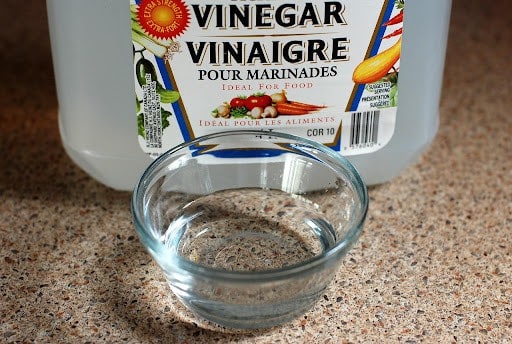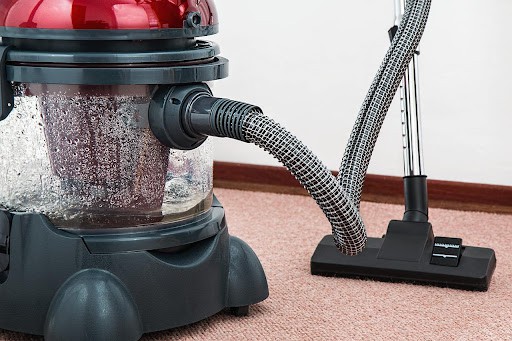If you’re dealing with a fresh stain, dampen the area with warm water. If it’s a dry stain, apply vinegar as it will dissolve the soap stain. If you’re handling excessive residue, use lots of clean water to rinse out your carpet completely. Finally, use a thick and dry cloth or a dry-wet vacuum cleaner to remove excess water.
Soap is a very versatile and handy cleaning product, but what if you spill some of it on your carpet while cleaning other things? How can you remove soap from a carpet?
If you accidentally spill liquid soap on your rug, you can easily wash it in the washer but you can’t do the same with carpets. They’re much bigger and harder to clean than rugs.
The things you can use to remove soap from your carpet include large amounts of warm water for fresh spills, white vinegar for dry stains, etc. Let’s learn all the details!
How To Get Soap Out Of Carpet: 5 Easy Ways
Stains at different stages of drying can be cleaned in different ways. For instance, fresh ones can be successfully cleaned with warm water, while dry stains can be cleaned with vinegar. The former looks like foam whereas the ladder has visibly dried.
If you’re lucky enough to own a wet-dry vacuum cleaner, a steamer, or a carpet cleaner, it shouldn’t take too much time and effort on your part to remove the soap stain.
If you don’t own any of these units, first determine the state of the soap, then, follow the next steps and you will remove the soap from your carpet in record time.
1. If it’s a Fresh Stain, Use Warm Water
First, use a clean, dry towel to dry out as much of the liquid soap as possible.
There will probably be soap residue on your carpet’s surface after removing the product with a clean towel. So, press a damp towel on the surface to remove the residue.
You can either use a new clean towel and dampen it with water or rinse the old one and firmly press it onto the affected area to take in any excess water. Wring the water out of the towel as many times as necessary until there’s nothing left.
Last Steps
Once you’re done, open a window and let your carpet air dry. Or use a regular vacuum cleaner that’s suitable for both wet and dry surfaces and vacuum your carpet.
You can also place a portable fan after removing the soap that will help excess moisture and prevent mold and mildew from appearing in the future.
Extra tip: Damp carpets start to attract dirt much faster, especially if liquid soap is left in the carpet for a long period. Therefore, make sure to remove fresh spills as soon as you notice them.
2. If it’s a Dry Stain, Use White Vinegar

If you don’t tackle fresh spills right away, they will eventually set in your carpet and take more time and effort to remove, bu they’re not invincible.
Therefore, if you’re dealing with a dry soap stain, first neutralize the soap with lukewarm water. Then, add vinegar to the water to speed up things and dissolve the soap faster.
Simply cover the dry stain(s) with a water and vinegar solution and soak a clean towel in the mixture for better results. The wet towel can help remove the soap from the carpet.
Repeat the same process until you’re sure most of the soap is removed from the carpet. If you don’t see any soap bubbles and foaming, it means you’re almost done.
Last Steps
Finally, add more warm water to the affected area of your carpet to remove any residue and blot any excess moisture with a dry towel. Once you’re done, let your carpet air dry. Some people use a wet-dry vacuum cleaner to speed up the drying.
If you don’t have a wet-dry vacuum cleaner, add a portable fan, open your windows, and let your carpet air dry completely before you step on it again.
Extra tip: Vinegar is relatively a mild stain cleaner, but make sure you don’t overuse it. Use enough to clean your carpet, but don’t oversaturate it. Otherwise, excess moisture can result in mold and mildew.
3. The Sponging and Blotting Technique
You can also try the sponging and blotting technique with vinegar.
Mix 1 cup of white vinegar and 1 gallon of water in a large container, then soak a clean towel, cloth, or a cleaning sponge in the solution, and wring it into the affected area.
Let the cleaning solution sit for a couple of minutes, then place another dry towel over it, and press firmly into it. Repeat the same process a few tiles until the soap is removed.
Each time you press firmly into the soap stain, you should use a dry towel, so keep that in mind.
Last Steps
Finally, let your carpet air dry. The next day, vacuum the whole surface with a standard vacuum cleaner. This will help you detect any discoloration. And if this is the case, call a professional carpet cleaning company and ask for help.
Expect to pay between $25 and $75 for their service for 1 room.
Extra tip: As I already mentioned, vinegar isn’t very abrasive, but you should still check for colorfastness. So, test a small patch with a small amount of vinegar, especially if it’s a very dark-colored or delicate carpet. Let it sit for a day and see if any change appears.
Diluted vinegar doesn’t pose danger to carpets, but colorfastness is a common problem with modern carpets. Therefore, if you have a new carpet, definitely do a test before you use vinegar for carpet cleaning.
4. If it’s Excess Residue, Use Kitty Litter
Kitty litter can also help in the soap removal process.
Keep in mind that this is a time-consuming method that will eventually clean the soap if you can’t get your hands on the necessary tools to blot away or vacuum the stain.
Start by adding kitty litter over the affected areas until they’re fully covered. You can use kitty litter for fresh spills as well as excess soap residue.
Once the kitty litter has absorbed the soap, scoop it out and toss it. Then, use either old clean towels or paper towels to take in any residual soap.
Last Steps
If you own a carpet cleaner or wet-dry vacuum, go over the affected area or vacuum the whole carpet to ensure it’s completely clean.
First, spray your carpet with water until it’s fully saturated. Then, use your carpet cleaner or wet-dry vacuum to help remove any remaining soap.
5. If Nothing Helps, Try a Dry-Wet Vacuum

If you don’t want to try the previous methods or they simply don’t help, give your dry-wet vacuum a try.
First, fill a clean spray bottle halfway with hot water, spray the affected area until it’s fully saturated, then vacuum your carpet with a wet-dry vacuum to remove the water.
Last Steps
The stain will still be wet after using this vacuum, therefore give the hot water some time to lift the soap. Repeat the same process until the soap is fully or almost removed.
Finally, blot the stain with a clean towel to remove any soap leftovers and excess water.
Extra Carpet Cleaning Tips
The faster you tackle any stains including soap stains in their initial stage, the easier it will be to remove them. The next cleaning tips can also help your cleaning process.
Patience is Key
Removing soap from your carpet can take time and effort, so remain patient during the whole process and repeat whichever method you choose until you see results.
Tackle Small Stains Manually
You don’t have to use a steam cleaner for small stains. Clean by hand instead. You can try the vinegar methods above and let your carpet air dry.
A Wet-Dry Vacuum Can Make Things Easier
This type of vacuum can help you remove hard discolorations and liquid spills, but you can also remove small soap spills with a wet-dry vacuum with plain water.
Some models enable using a detergent for better results, so make sure to check if yours has this feature.
FAQs On How To Get Soap Out Of Carpet
What Happens if You Leave Soap on the Carpet?
The chemical content of the soap will weaken the fibers of your carpet and cause damage if it’s not removed. Moreover, moisture can result in mold and mildew, so make sure you remove any spills on time. Otherwise, you’re risking ruining your carpet.
Does Dish Soap Stain Carpet?
Soap stains carpets, especially dishwashing soap since it’s loaded with dyes that can destroy the carpet’s fibers. So, it’s very important to remove soap spills as soon as you notice them.
Is Vinegar Bad for Carpets?
Vinegar makes a great carpet cleaner, but it’s not suitable for silk, wool, and other natural fibers. These carpets can’t handle acidity well, so if you have this type of carpet, avoid vinegar. Vinegar can also discolor very dark-colored carpets.
